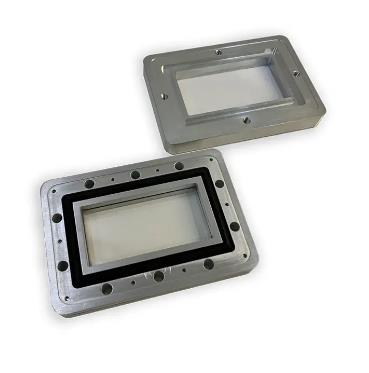What Is a Waveguide Phase Shifter?
Essential Tool in Microwave Engineering
A waveguide phase shifter is a vital component used in the field of microwave and radio frequency (RF) engineering to alter the phase of an electromagnetic wave passing through a waveguide without significantly changing its amplitude. This capability is critical for a variety of applications, including phased array antennas, radar systems, and satellite communications.

Operating Principles of Waveguide Phase Shifters
Modifying Signal Phase
Waveguide phase shifters are designed to introduce a specific phase change to the signal, which can be adjusted according to system requirements. The phase shift is typically measured in degrees and can range from a few degrees up to 360 degrees or more, depending on the design and application. This phase adjustment is achieved by altering the physical properties within the waveguide that affect the propagation velocity of the wave.
Types of Waveguide Phase Shifters
There are several types of waveguide phase shifters, including:
- Dielectric-loaded phase shifters: These use a movable dielectric material inserted into the waveguide to vary the electromagnetic properties and hence the phase of the signal.
- Ferrite phase shifters: Utilizing the properties of ferrites that change under the influence of a magnetic field, these shifters can rapidly alter the phase in response to external magnetic controls.
Key Applications in Technology
Phased Array Antennas
In phased array systems, waveguide phase shifters are used to steer the beam of antennas electronically without moving the antennas themselves. By adjusting the phase of the incoming signal at different points in the array, the beam can be directed at different angles, enhancing the system's ability to target and track objects dynamically.
Radar and Communication Systems
Phase shifters play a critical role in radar systems by facilitating the rapid scanning of radar beams across a wide area, improving the detection and tracking of objects. In satellite communications, they help in optimizing signal paths for better coverage and data transmission capabilities.
Advancements and Innovations
Precision and Efficiency
Modern waveguide phase shifters are designed with precision to allow fine control over the phase shift, which is crucial for high-resolution applications. They are also built to minimize losses, ensuring that the amplitude of the signal remains stable while the phase is altered.
Material Innovations
Recent developments in materials science have led to the creation of more efficient and versatile phase shifters. Innovations include the use of advanced ferrite materials and enhanced dielectric composites that provide quicker response times and greater durability.
Conclusion
In summary, the waveguide phase shifter is a fundamental component in modern RF and microwave systems, providing the essential functionality of phase control. Its role in enabling dynamic signal manipulation makes it indispensable in advanced communication and radar technologies. As the demand for more sophisticated and flexible communication systems grows, the importance of reliable and precise phase shifters continues to rise, underscoring their pivotal role in the development of future telecommunications infrastructure.
